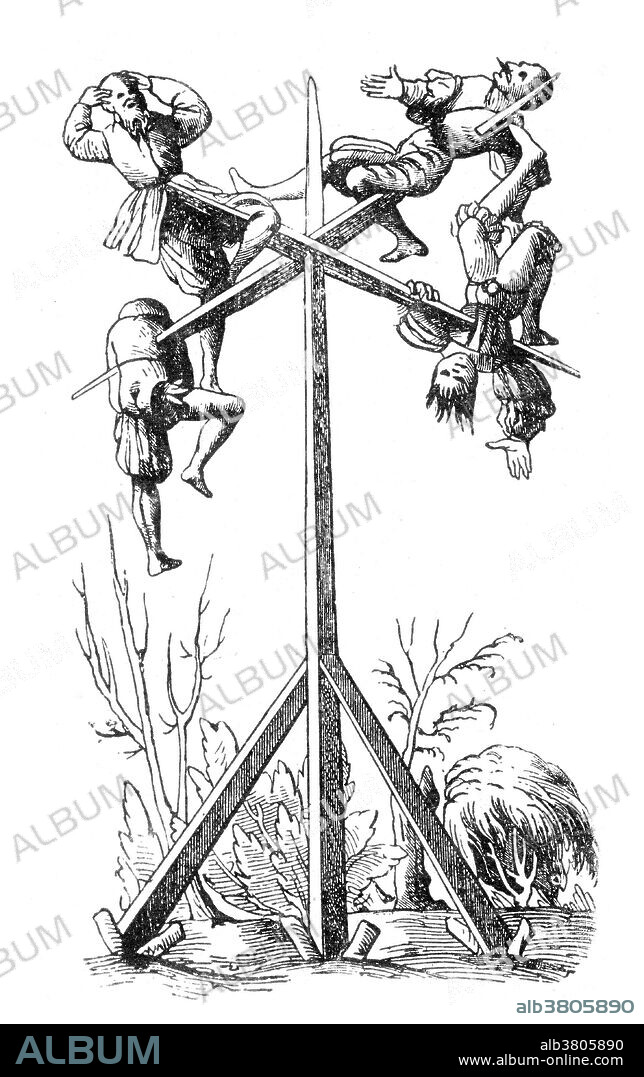alb3805890
Impalement, Method of Torture and Execution, 1552

|
Añadir a otro lightbox |
|
Añadir a otro lightbox |



¿Ya tienes cuenta? Iniciar sesión
¿No tienes cuenta? Regístrate
Compra esta imagen

Título:
Impalement, Method of Torture and Execution, 1552
Descripción:
Ver traducción automática
Die strafe des pfahlens (Penalty of the post). Impalement, as a method of execution and also torture, is the penetration of a human by an object such as a stake, pole, spear, or hook, often by complete or partial perforation of the torso. It was used particularly in response to crimes against the state and regarded across a number of cultures as a very harsh form of capital punishment and recorded in myth and art. Impalement was also used during wartime to suppress rebellion, punish traitors or collaborators, and as a punishment for breaches of military discipline. Offenders have also been impaled for a variety of cultural, sexual and religious reasons. References to impalement in Babylonia and the Neo-Assyrian Empire are found as early as the 18th century BC. Within the Ottoman Empire, this form of execution continued into the 20th century. Woodcut from Sebastian Münster's "Cosmographia", 1552.
Crédito:
Album / NYPL/Science Source
Autorizaciones:
Modelo: No - Propiedad: No
¿Preguntas relacionadas con los derechos?
¿Preguntas relacionadas con los derechos?
Tamaño imagen:
2924 x 4650 px | 38.9 MB
Tamaño impresión:
24.8 x 39.4 cm | 9.7 x 15.5 in (300 dpi)
Palabras clave:
1552 • ARTE • BLANCO Y NEGRO • CASTIGAR • CASTIGO • CRUEL • CRUELDAD • DIBUJO • DURAS • EJECUCION • EMPALAR • HISTORIA • HISTORICO • HOMBRES • ILUSTRACION • INSTRUMENTO TORTURA • METODO TORTURA • METODO • OBRA DE ARTE • PENA CAPITAL • S. XVI • SIGLO XVI • VERDUGO
 Pinterest
Pinterest Twitter
Twitter Facebook
Facebook Copiar enlace
Copiar enlace Email
Email
